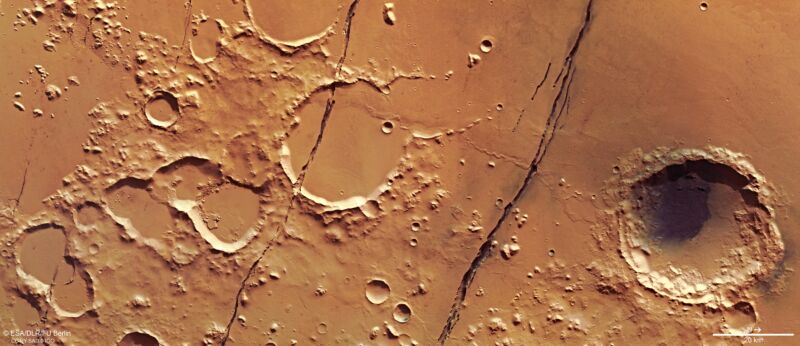-
 chevron_right
chevron_right
InSight and Mars orbiter use impacts to give new info on Mars’ interior
news.movim.eu / ArsTechnica · Thursday, 27 October, 2022 - 21:16 · 1 minute

Enlarge / The cracked terrain of Cerberus Fossae appears to be the source of most of the seismic activity on Mars. (credit: Image courtesy of ETH Zurich)
On Thursday, NASA announced that the InSight lander was continually losing power after dust coated its solar panels. The agency expects that it will probably lose contact with the lander within the next two months. But it is going out in style, as its onboard seismometer picked up the largest impacts we've observed since we put a high-resolution camera in orbit around the red planet.
Not only does the seismic data tell us a lot about the structure of Mars' crust, but it has validated a technique used to extract positional information from a single seismometer. That technique indicates that roughly half the seismic energy that InSight has picked up comes from a single location on Mars.
Impactful events
The cameras on the Mars Reconnaissance Orbiter (MRO) have been observing Mars for 16 years. Before 2021, they had not observed any impacts that formed a crater over 130 meters across. In 2021, it spotted two. One of them was not especially useful. MRO imaging didn't capture exactly when the impact occurred, and it was far enough from the site of the InSight lander that direct seismic waves ran into the planet's core, which meant that only indirect seismic energy reached the instruments on InSight.
